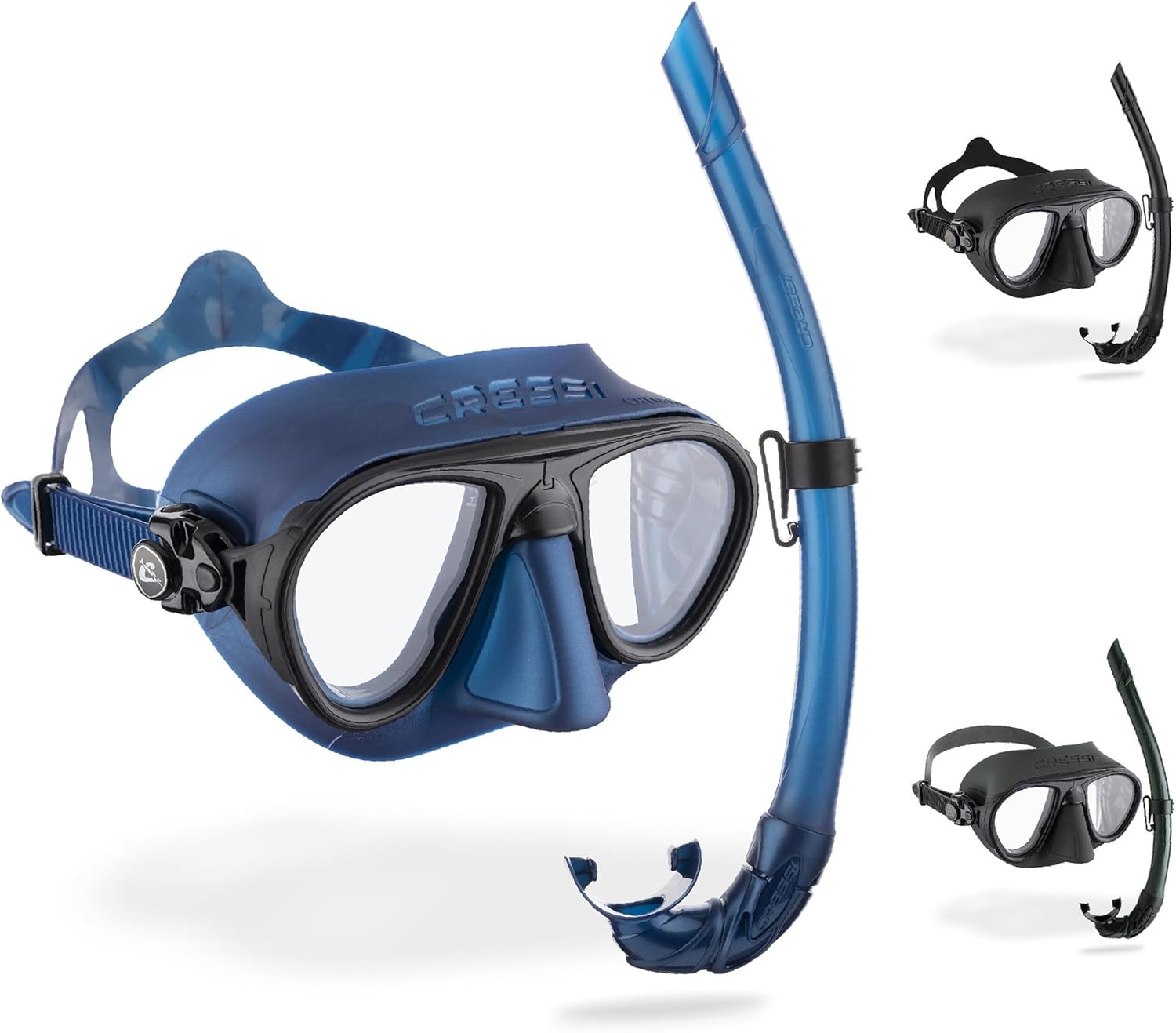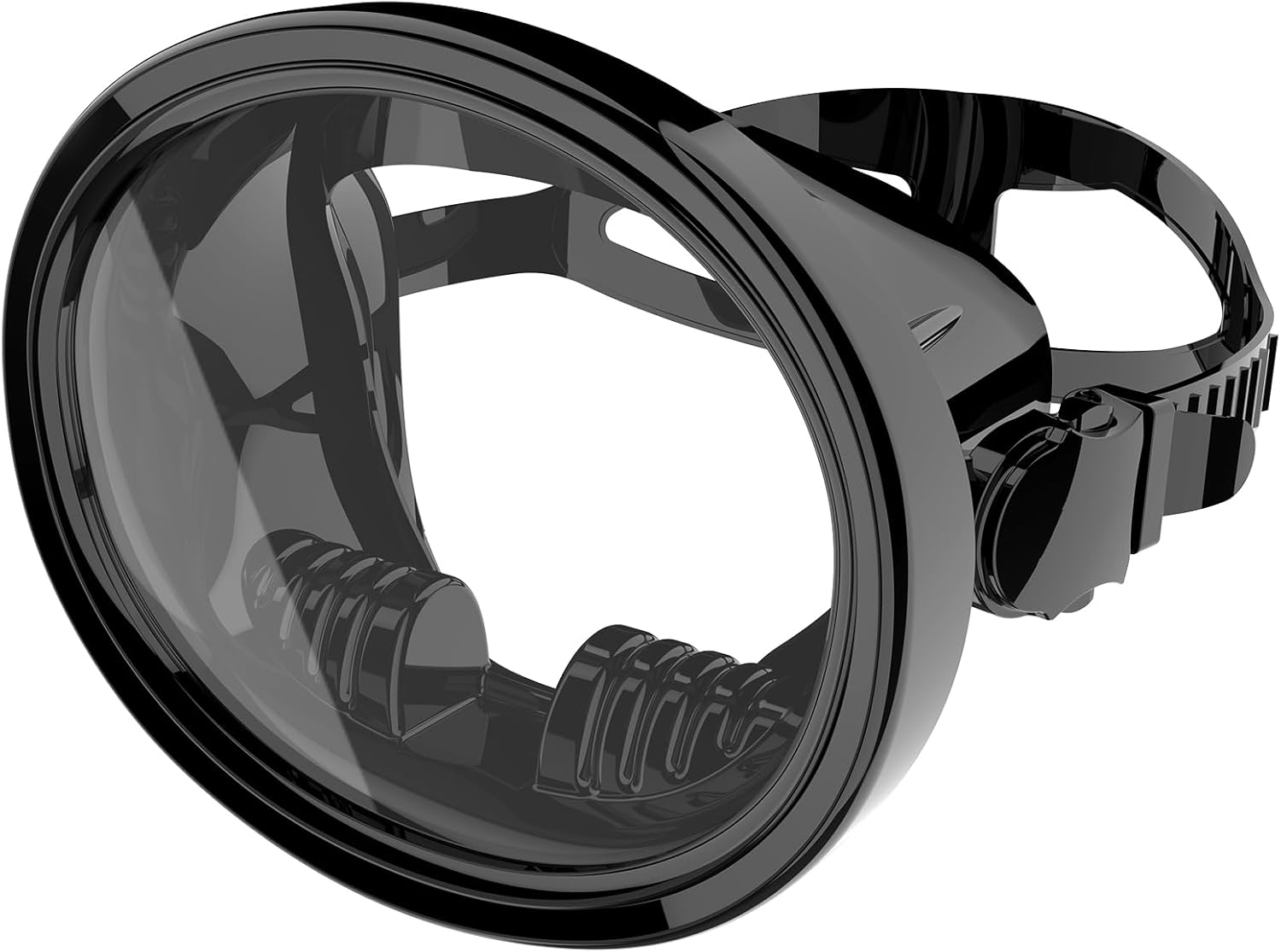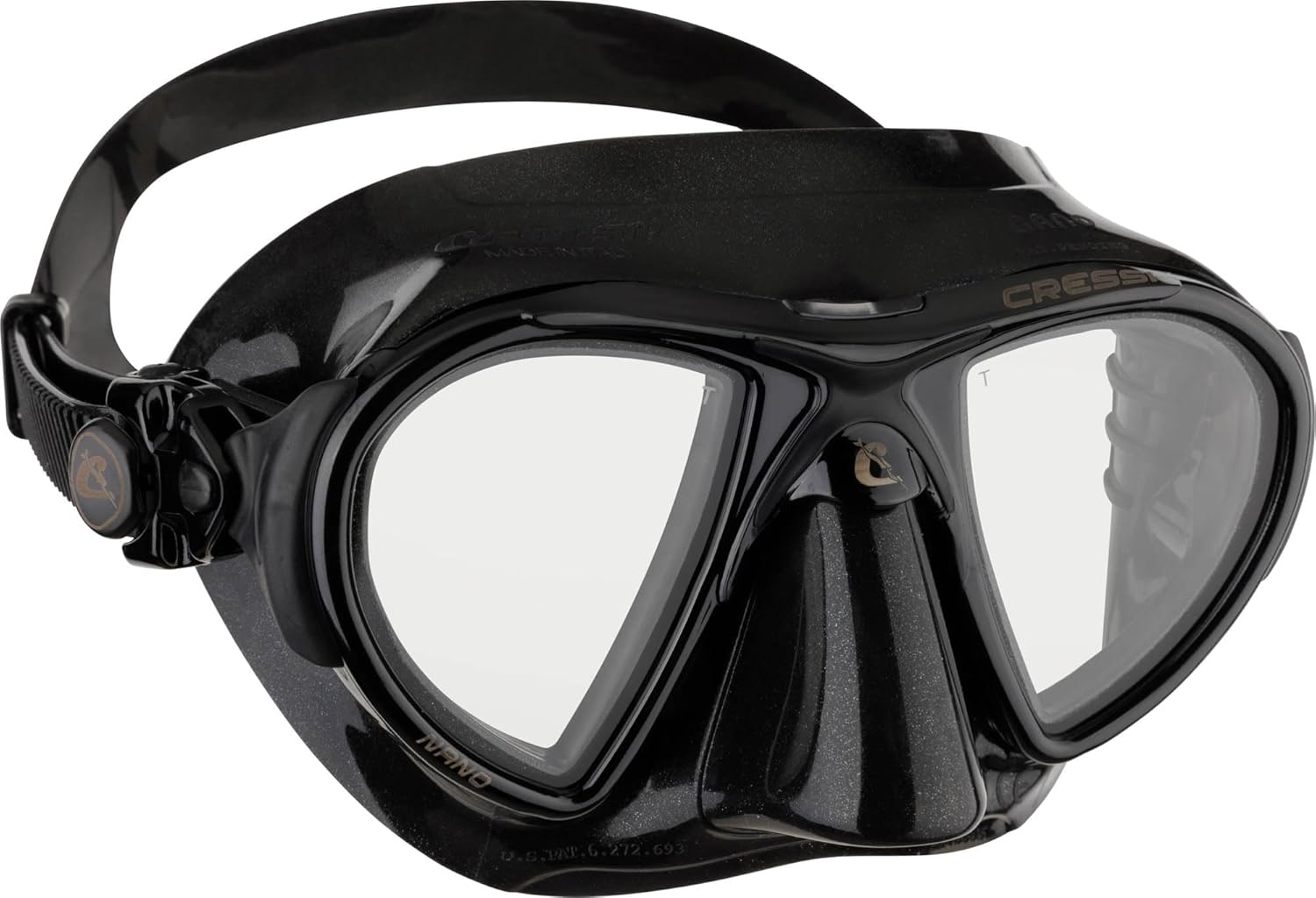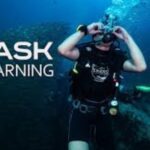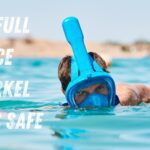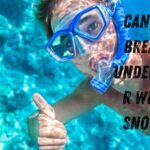Can You Freedive With Full Face Snorkel Mask – A Deep and Honest Guide
Can you freedive with full face snorkel mask? If you’ve ever seen someone bobbing around with one of those futuristic bubble helmets strapped to their face, you might have thought, “That looks comfortable.”
Then maybe you imagined yourself slipping under the waves, sleek as a seal, with that mask giving you a perfect view. The joke is, it’s about as good an idea as trying to sprint in a pair of roller skates. Fun to think about, not so fun when gravity (or water pressure) reminds you who’s in charge.
So, let’s get straight to the heart of it.
Can You Freedive With Full Face Snorkel Mask?
No. You should not freedive with a full face snorkel mask. These masks are designed for surface snorkeling: calm, relaxed floating with your face in the water. Freediving is an entirely different activity.
The moment you dive beneath the surface, you deal with pressure changes, the need to equalize your ears, potential mask squeeze, and the serious risk of holding your breath with trapped carbon dioxide in a large mask chamber. Full face snorkel masks were never engineered for that.
They work fine for slow surface exploration, but when you try to freedive, the drawbacks pile up: poor equalization control, difficulty clearing the mask if it floods, and the risk of CO₂ buildup that can cause dizziness or blackout. That is why every experienced freediver and safety body advises against it.
What Exactly Is a Full Face Snorkel Mask?
The full face snorkel mask was created to make snorkeling easier for beginners. Instead of a separate snorkel tube in your mouth and a smaller snorkeling mask covering your eyes and nose, the full-face version covers your entire face in one piece.
You breathe naturally through your nose and mouth, and the snorkel tube sticks out from the top. It feels natural, especially for people not used to clenching a snorkel between their teeth.
On the surface, this design is quite comfortable. It also gives you a panoramic view, which explains why they became so popular for casual vacationers. But this same design: large internal volume, sealed coverage of mouth and nose, complex airflow channels, makes them unsuited for freediving.
|
|
|
|
Why Freediving Is a Different World
Freediving is not snorkeling. With snorkeling, your body stays mostly at the surface, breathing steadily through the snorkel tube. Freediving, on the other hand, is breath-hold diving where you dive down, equalize pressure in your ears and mask, then ascend back up, all on a single breath.
Here’s what changes once you descend:
- Pressure multiplies quickly. At just 10 meters deep, the pressure has doubled compared to the surface. This crushes airspaces unless you equalize.
- Equalization is vital. Freedivers pinch their nose through the mask and gently blow to equalize ears. With a full face snorkel mask, your nose is trapped inside the hard frame. You can’t pinch it properly.
- Mask squeeze is real. The air inside a mask compresses as you go down. A proper freediving mask has low internal volume so equalization is easier. A bulky full face snorkel mask holds so much air that it becomes uncomfortable and even painful as you descend.
This is why experts recommend low volume mask for freediving: they’re easier to equalize and don’t suck onto your face uncomfortably at depth.
The Biggest Safety Concern: Carbon Dioxide Buildup
This is the part that makes safety professionals nervous. When you breathe into a full face snorkel mask, the airflow channels must separate fresh air coming in from the snorkel and stale air going out.
If the design is flawed or if you’re swimming hard, the exhaled air can partially stay inside the mask. That means you’re rebreathing some carbon dioxide.
On the surface, this can already cause headaches, dizziness, or panic. Underwater, while holding your breath, it’s even riskier. Imagine descending, already under pressure, with CO₂ building in the mask. That’s a recipe for confusion, blackout, or worse.
This is why studies and dive safety groups repeatedly warn that full face snorkel masks are not built for intense swimming or diving.
Equalization: Why Full Face Snorkel Masks Fail Under Pressure
Freediving requires you to equalize constantly, sometimes every meter of descent. To equalize, you pinch your nose through your freediving masks and gently blow.
With a full-face snorkel mask, your nose is sealed behind a plastic or silicone barrier. There’s no way to pinch it. Some models claim to include “nose pockets” inside, but in practice, they’re awkward and ineffective.
As you go deeper, the mask begins to squeeze against your face painfully. With no way to equalize properly, you either turn back up or risk injury. This is why freedivers rely on low-volume masks designed specifically for pressure changes.
Flooding and Emergency Situations
Imagine you’re ten feet down and your full face mask leaks. A traditional mask can be cleared with a quick breath out through the nose.
A full face mask requires removing the entire unit from your face to drain it. That means no air until it’s resealed, which is not something you want to deal with while holding your breath underwater.
And if you faint or panic, rescuers have a harder time removing a full face mask quickly compared to a simple mask-and-snorkel combo. Many tour operators stopped renting them for this reason.
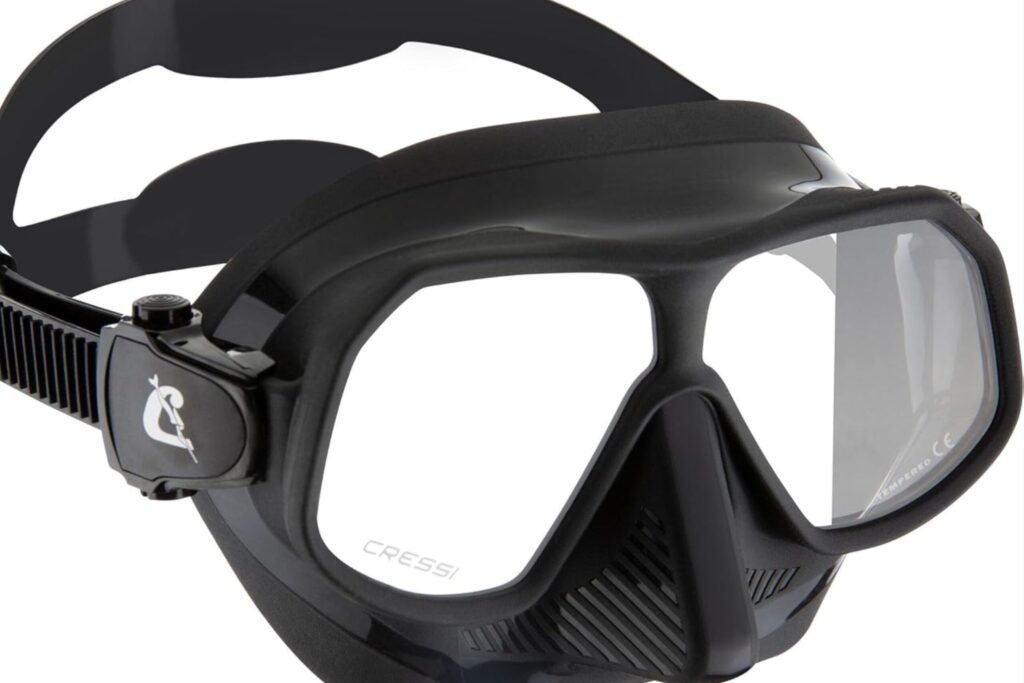
Why Low Volume Mask for Freediving?
Now let’s flip the conversation. Freediving works best with low-volume masks. These are smaller masks that sit closer to your eyes, leaving less airspace inside. Less airspace means less squeeze from pressure and less effort needed to equalize. They’re also easier to clear if they leak.
This is why every freediving instructor or course you’ll find will point you toward freediving masks rather than full-face snorkel masks.
Tour Operators and Rental Rules
Many snorkeling tours once offered full-face snorkel masks because tourists found them easy. But after reports of accidents, some operators banned them.
Others allow them only at the surface with strict instructions not to dive down. If you plan to book a trip, check the company’s rules. Don’t assume your mask will be allowed.
Why People Still Ask: The Appeal of Full Face Masks
If the risks are so clear, why do people still ask “can you freedive with full face snorkel mask”?
- The masks look modern and safe, like scuba gear.
- They’re more comfortable for casual snorkelers.
- Marketing often avoids mentioning depth limits.
- People confuse them with professional full-face scuba masks that work with regulators.
That last point is key. A full-face scuba mask is an entirely different piece of equipment, used by commercial and military divers. It connects to a regulator, handles pressure, and allows communication. A full face snorkel mask is not the same thing.
What If You Still Want to Try?
If you insist on testing a full face snorkel mask underwater, here are hard rules:
- Stay at the surface.
- Never hold your breath while diving with it.
- If you want to dive down, take it off and switch to a proper freediving mask and snorkel.
- Always test the mask in shallow, calm water before extended use.
It’s simple: treat a full-face snorkel mask as a floating device, not a diving device.
What to Use Instead
If freediving attracts you, start with:
- A low volume freediving mask. This keeps equalization simple.
- A simple snorkel. No valves, no gadgets, just a tube that works.
- Dive knives and other accessories only if you’re advancing to more technical dives or spearfishing, but not necessary for beginners.
- Proper freediving training. Knowing how to equalize, ascend slowly, and dive with a buddy is what makes freediving safe.
FAQs on Can You Freedive with Full Face Snorkel Mask
Why are full face snorkel masks linked to accidents?
Mostly due to CO₂ buildup, panic, or difficulty removing them quickly in emergencies.
Are there safe versions of full face masks?
Some manufacturers redesigned airflow systems to reduce CO₂ buildup. Still, they remain surface-only tools.
Can kids use them safely?
Only for floating at the surface, under adult supervision. Never for freediving.
Why low volume mask for freediving and not full face?
Because pressure equalization is easier, mask squeeze is reduced, and clearing is simple.
Can snorkel masks be used for freediving?
Yes, as long as it’s a proper freediving mask with a separate snorkel.
What’s the difference between freediving masks and snorkeling masks?
Snorkeling masks can be larger and higher volume. Freediving masks are smaller, closer to the face, and optimized for depth.
The Bottom Line on Can You Freedive with Full Face Snorkel Mask
So, can you freedive with full face snorkel mask? The answer remains no. They are not designed for the pressure, the equalization needs, or the emergency responses that freediving requires. They are fine for surface sightseeing, floating above coral reefs, or snapping selfies in shallow lagoons.
But the moment you want to dive beneath, leave the bubble helmet at home and grab the right gear.
If freediving calls you, get a low volume mask for freediving, a simple snorkel, and learn the techniques from trained professionals. The ocean is beautiful, but it rewards respect, preparation, and the right tools, not shortcuts.
